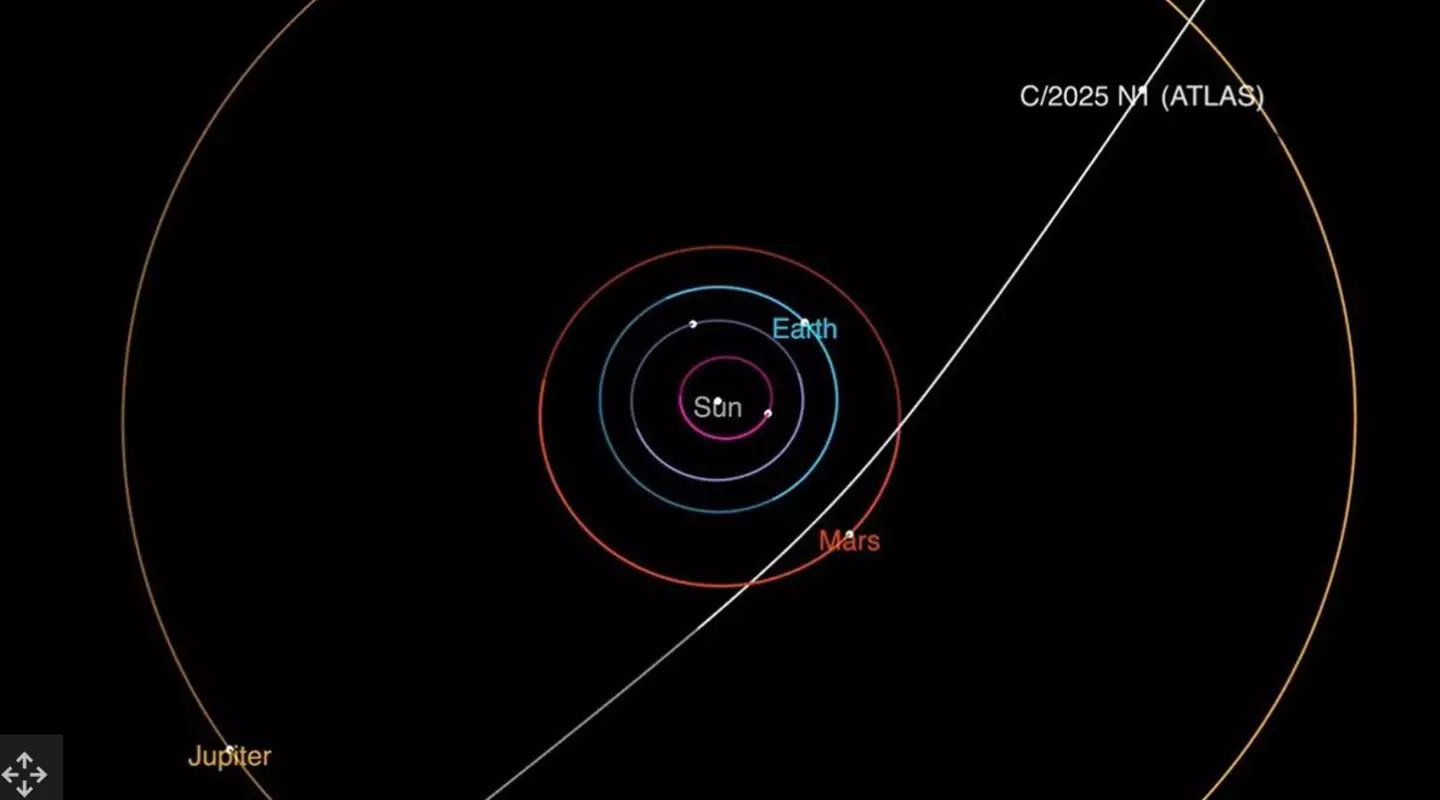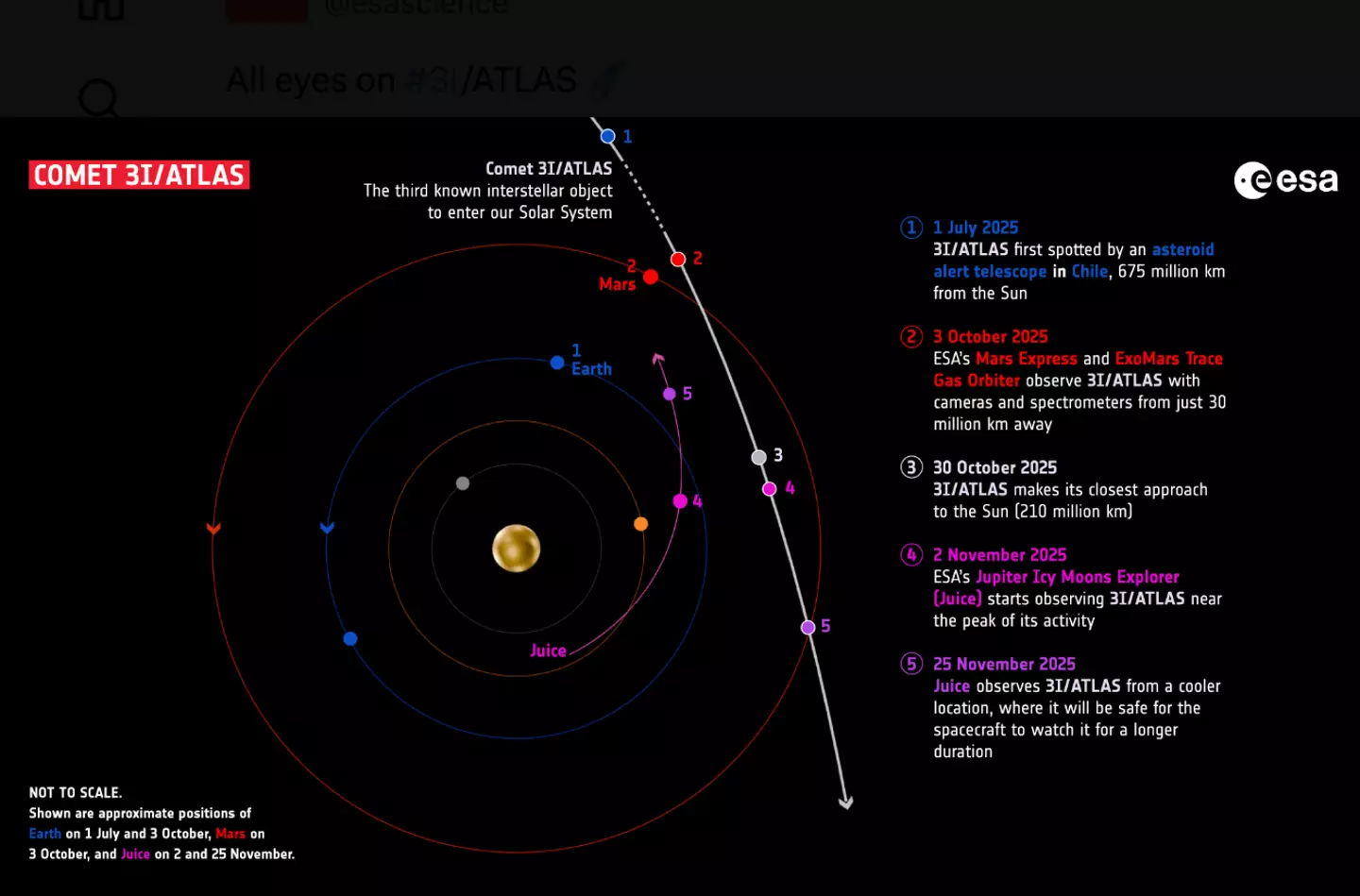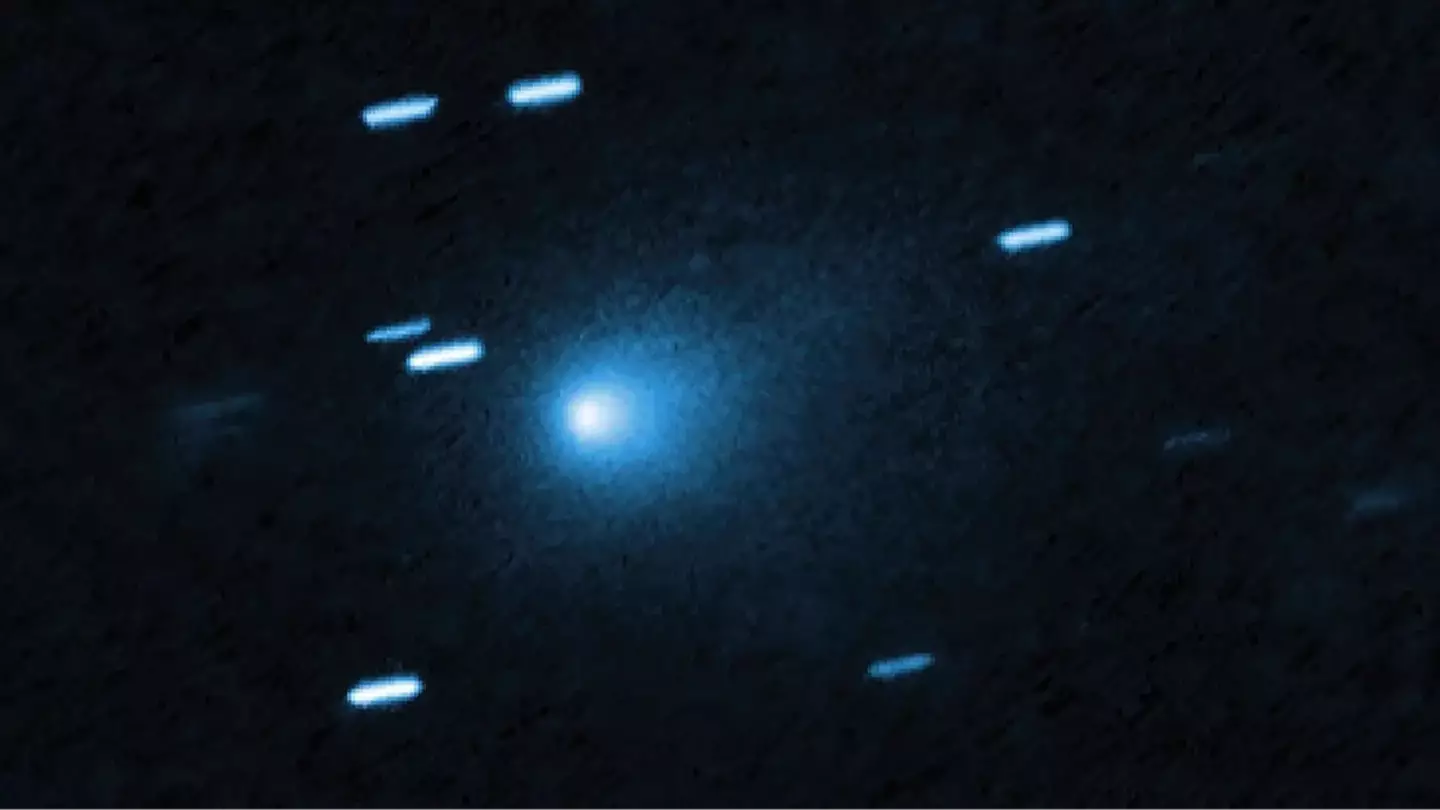NASA has initiated a new mission aimed at monitoring a comet the size of Manhattan, which is exhibiting unprecedented behavior that has caught the attention of scientists.
This comet, referred to as Comet 3I/ATLAS, has been raising concerns since its discovery in July of this year.
The International Asteroid Warning Network (IAWN), a coalition that includes astronomers and space agencies worldwide, has placed the comet on its watchlist, labeling it as a potential ‘planetary threat.’
Comet 3I/ATLAS has displayed unusual activities, such as emitting jets of particles toward the Sun rather than away from it, creating what’s known as an ‘anti-tail’. It has also released a metal compound that has never been observed in nature before.
Interestingly, the comet is expelling approximately four grams of nickel every second, with no detectable iron, a combination that is atypical for comets.
Even more intriguing is that this metal compound, nickel tetracarbonyl, has only been synthesized by humans in laboratory settings.

Harvard astrophysicist Avi Loeb shared with the New York Post that this alloy had only been observed in human manufacturing.
Loeb, who is well-known for his controversial theories regarding alien technology, suggested that the comet’s peculiar acceleration and atypical trajectory might imply it is more than just a simple mass of ice and rock.
He speculated, “It could indicate that it was an alien probe sent to do recon on Earth.”
To investigate further, the IAWN plans to launch a comprehensive ‘comet campaign’ from November 27 to January 27. This campaign aims to enhance detection techniques and monitor 3I/ATLAS’ course, with the ultimate goal of preparing to protect Earth.
“In preparation for the campaign, we will conduct a workshop on methods to accurately measure comet astrometry,” the organization stated.
Space enthusiasts are abuzz on social media.

One user on X commented, “So, this is what’s happening, for the first time in history, an interstellar object namely 3I/ATLAS has been formally enrolled in a planetary defense–level observation campaign.”
“Their focus is ‘a test of improved astrometry methods.’ In other words, the object isn’t behaving like it should,” the user added.
Despite the excitement, NASA and IAWN stress that the mission is more focused on honing observational techniques rather than preparing for any catastrophic events. Coincidentally, 3I/ATLAS is nearing its closest approach to the Sun before it becomes out of sight—a maneuver Loeb suggests could be using the Sun’s gravitational pull for acceleration.
Loeb warned in a recent blog post, “At around 28 miles wide, 3I/ATLAS might not be a harmless comet. If it’s a massive mothership, it will likely continue along its original path and eventually exit the Solar System.”

